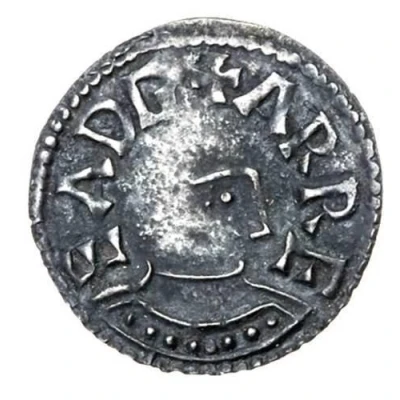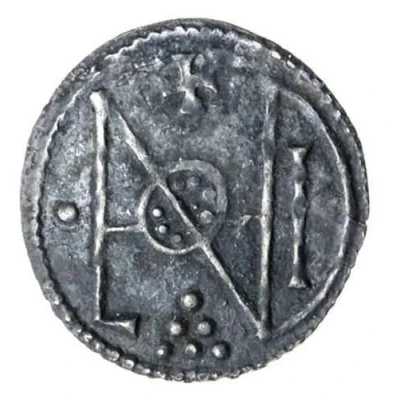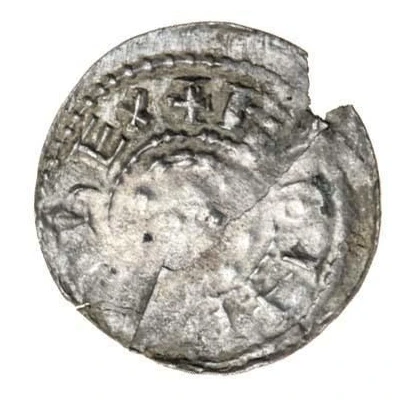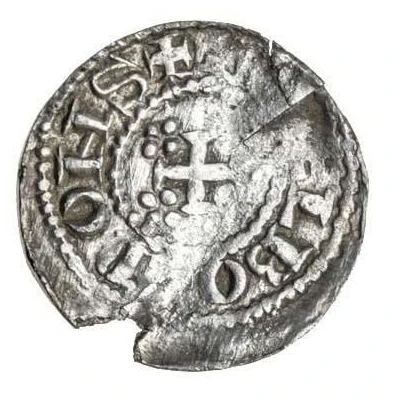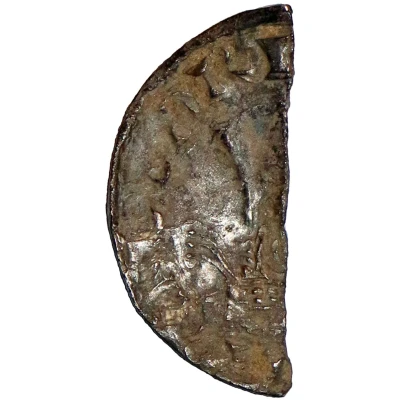
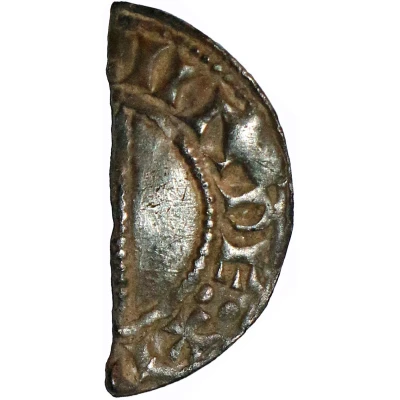

Halfpenny - Harold II Pax type; with sceptre ND
1066 year| Silver | 0.55 g | 19 mm |
| Issuer | England (United Kingdom, British Overseas Territories and Crown Dependencies) |
|---|---|
| King | Harold II (1066) |
| Type | Standard circulation coin |
| Year | 1066 |
| Value | ½ Penny |
| Currency | Penny (924-1158) |
| Composition | Silver |
| Weight | 0.55 g |
| Diameter | 19 mm |
| Shape | Half circle |
| Technique | Hammered |
| Orientation | Variable alignment ↺ |
| Demonetized | Yes |
| Updated | 2024-10-08 |
| Numista | N#402136 |
|---|---|
| Rarity index | 97% |
Reverse
Lettering across field, legend around
Script: Latin
Lettering: [PAX]
Translation: Peace
Comment
Harold was the son of Earl Godwine of Essex, who had dominated the royal court, and was brother-in-law to Edward the Confessor. Harold successfully repulsed an invasion of Harold Hadrada of Norway, but was himself killed in the Battle of Hastings after a reign of ten months.
Medieval coins were cut into halves and quarters to provide fractional denominations without the need to strike new coins. It is thought these were generally cut at the mint, although it is also likely to have happened during transactions. Cut halfpennies are known in England from Anglo-Saxon times (c. 750s) until Edward I introduced round farthings and halfpennies in 1279.
('A' suffix has been added to the Spink reference to differentiate from the full penny.)
Interesting fact
The Harold II Halfpenny coin was issued during the reign of King Harold II of England, who ruled from 1066 until his death in the same year. This coin features a unique design, with the king holding a sceptre and a small cross on the reverse side. It's made of silver and weighs 0.55 grams. Despite its small size, this coin is a significant piece of history, as it was issued during a time of great turmoil in England, with the Norman Conquest taking place just a few months after Harold's coronation.
